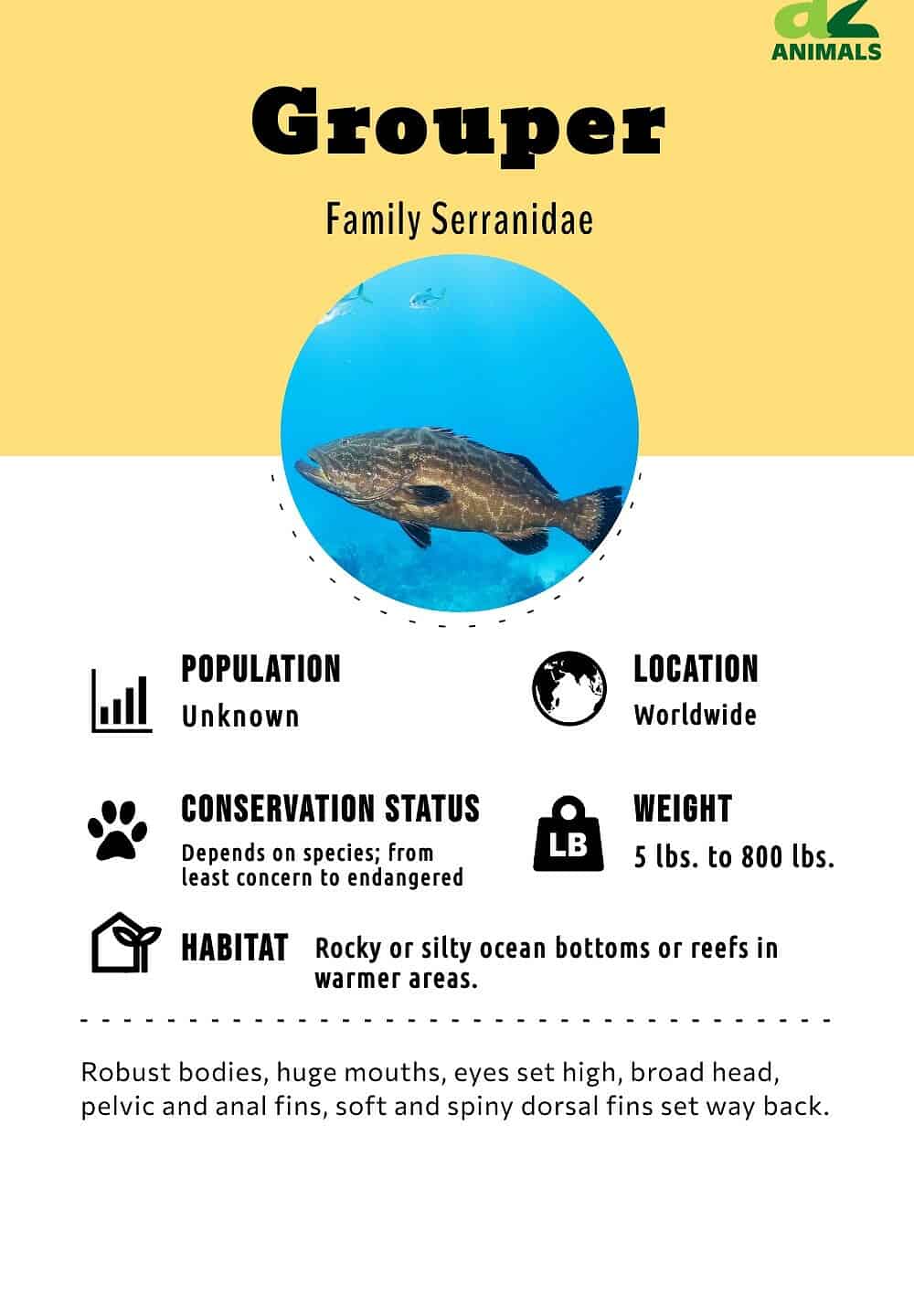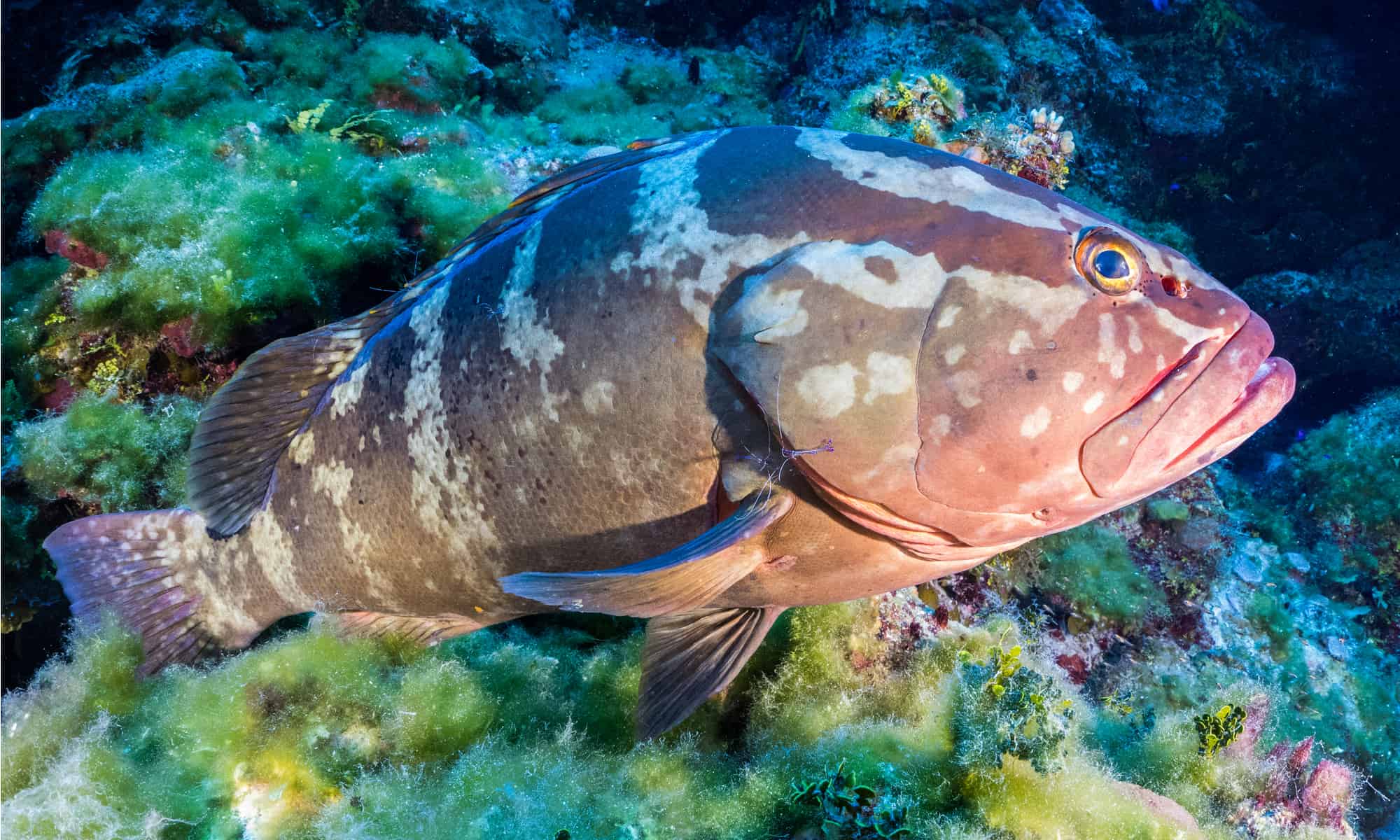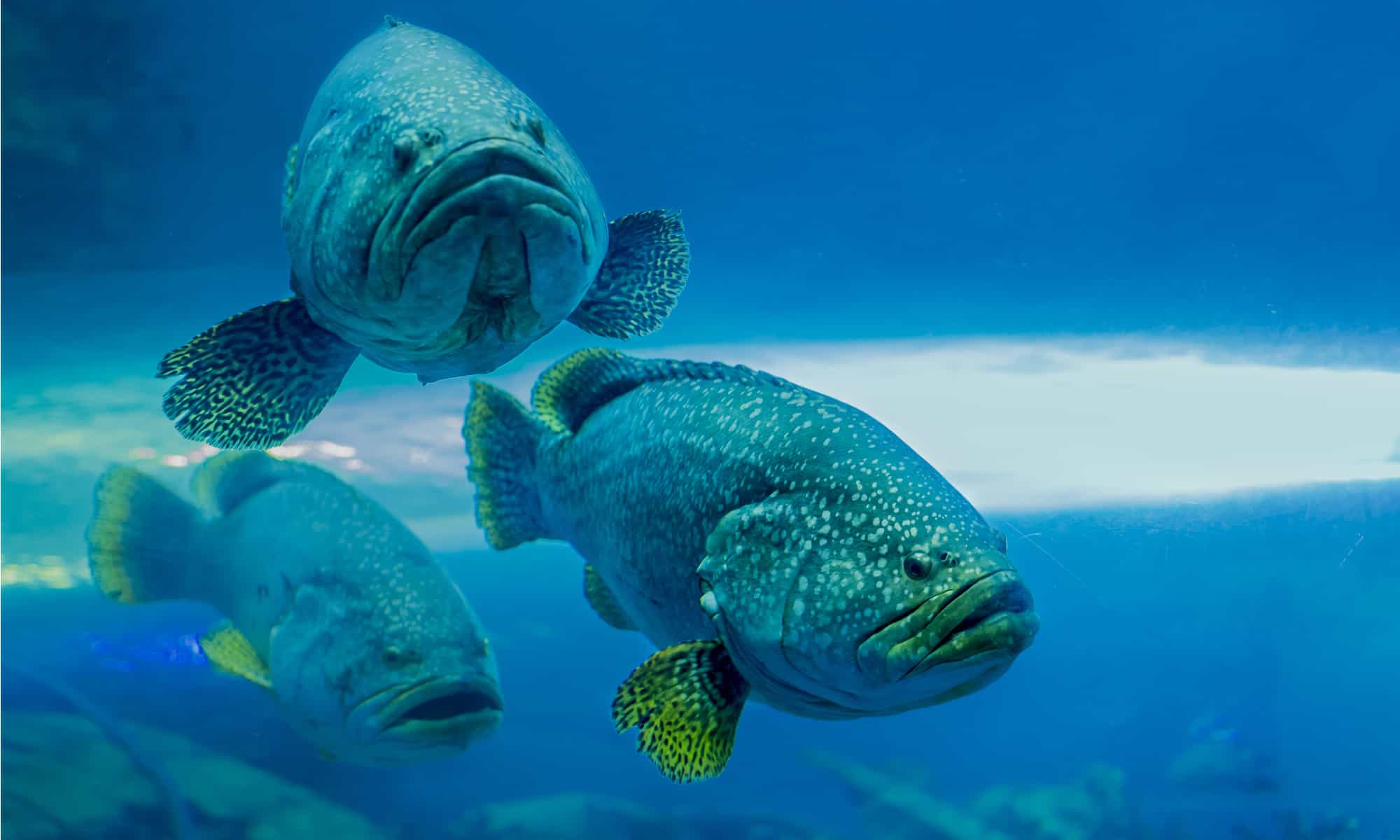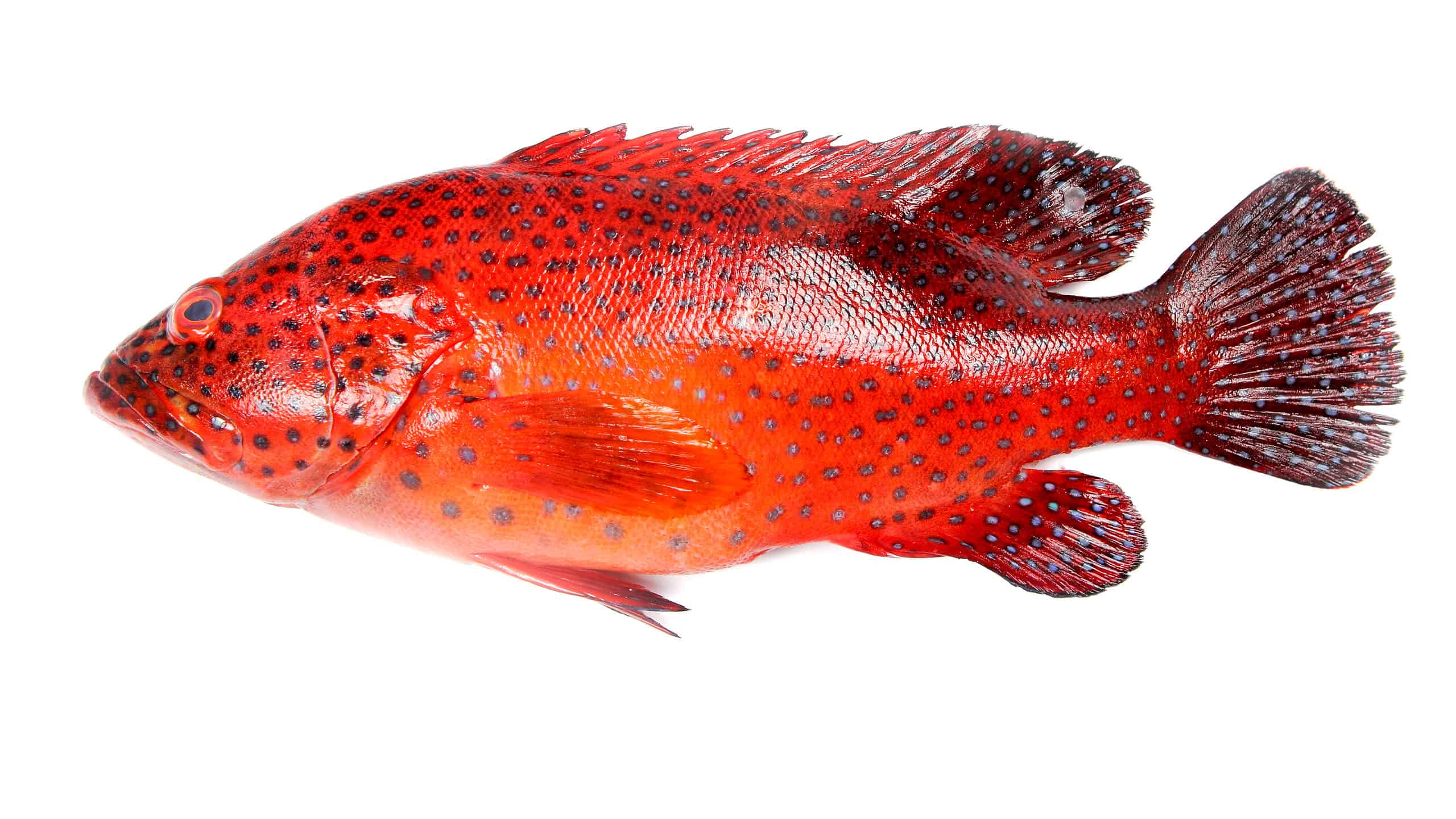Grouper
Epinephelinae
Many grouper can change their sex, and it is always from female to male.
Advertisement
Grouper Scientific Classification
- Kingdom
- Animalia
- Phylum
- Chordata
- Class
- Actinopterygii
- Order
- Perciformes
- Family
- Serranidae
- Scientific Name
- Epinephelinae
Read our Complete Guide to Classification of Animals.
Grouper Conservation Status
Grouper Facts
- Prey
- Other fish, sea turtles, small sharks, crustaceans, octopuses, zooplankton
- Group Behavior
- Solitary
- Group
- Fun Fact
- Many grouper can change their sex, and it is always from female to male.
- Estimated Population Size
- Unknown
- Biggest Threat
- Overfishing, habitat destruction
- Most Distinctive Feature
- A robust body and a huge mouth
- Other Name(s)
- Hamlets, hinds, podges, lyretails
- Gestation Period
- 1-2 days
- Optimum pH Level
- 6.0-8.0
- Habitat
- Tropical and subtropical seas
- Predators
- Humans, larger groupers, sharks, barracudas
- Diet
- Carnivore
- Type
- Fish
- Common Name
- Grouper
- Number Of Species
- 160
View all of the Grouper images!
The Grouper is one of the biggest bony fish in the sea.

Groupers are fish with stout bodies and huge mouths that let them suck in their prey at a distance and gulp the food down whole. The meat of a grouper is delicious, which has become problematic as too many species are now overfished. The good news is that more and more countries are striving to conserve these amazing animals.
Five Amazing Facts

The Nassau grouper is one of 159 species of grouper fish.
©Drew McArthur/Shutterstock.com
Here are some facts about this very diverse group of fish:
- Groupers belong to the Serranidae family, but not all serranids are groupers.
- The largest grouper, the giant Goliath grouper, can grow to 8 feet long and weigh over 800 pounds. The smallest, the Coney, grows to about a foot and weighs about a pound.
- Some groupers hunt with moray eels.
- Groupers are one of the few fish that eat red lionfish, which are both venomous and invasive.
- Groupers have a few teeth, but they mostly use crushing bony plates inside their pharynx to eat.
Classification and Scientific name
Groupers belong to the Serranidae family of fishes, which includes sea basses, sea perches, and jewfish. The word “serra” in New Latin means “saw” or “sawfish” even though the sawfish is a type of shark and not related to the grouper. Groupers also belong to a subfamily called Epinephelinae. This subfamily is then subdivided into five tribes, 32 genera and 159 species, though some biologists believe there are as many as 234 species of grouper. Some of the species are mentioned below.
Appearance

The Neptune grouper is a brightly colored and very expensive fish.
©John E. Randall / CC BY-SA 3.0, via Wikimedia Commons – License
Whether they are large or small, groupers are fish with robust bodies and huge mouths. Typically, they have eyes set high on a broad head, pelvic and anal fins and soft and spiny dorsal fins set way back on the body. They may have spines on their gill covers, and the lower jaw may project past the upper jaw. Many species are boldly colored and have amazing patterns, and some can change colors. Types of groupers include:
- Goliath grouper. This is the largest of the groupers, growing to 8.2 feet and as much as 800 pounds! Also called the itajara, it is found in the Caribbean Sea, the Gulf of Mexico and as far south as Brazil. This giant fish is also found off the coast of west Africa. Its conservation status is vulnerable, and its population is decreasing.
- Broomtail grouper. The broomtail grouper is a member of the Mycteroperca genus and gets its name from the shape of its tail. It has two color patterns: either gray or gray-green with brown blotches or grayish-brown with dark brown fins with white borders. It is found off the coast of California and down to Central America, the Galapagos Islands and Peru. Its conservation status is data deficient.
- Golden grouper. Found in the eastern Indian and western Pacific oceans, it is the only fish in the genus Saloptia. Its body is shades of pink and gold. At 15 inches, it is small for a grouper and found in the “twilight zone” of its habitat. Its conservation status is least concern.
- Neptune grouper. This grouper lives mainly in the deep waters of the Western Pacific Ocean and among the coral reefs of the Indo–Pacific. The price of the fish ranges between $6,000-8,000. It is known in Asia for its bright red and yellow patterns and used in recipes such as sashimi.
- White-edged lyretail. This fish belongs to the Variola genus. It is a bright red fish spotted with pale blue or pink with a pale saddle and dark tail fin edged with white. It’s found in reefs in the Indo-Pacific waters. Its conservation status is also least concern.
Distribution, Population, and Habitat

Goliath groupers, the largest of their kind, can eat small sea turtles.
©Supermop/Shutterstock.com
Groupers are found worldwide in warmer waters, from the surface of the ocean to as far down as 600 feet. As for specific habitats, they prefer reefs or areas of the ocean with rocky or silty bottoms. Many groupers breed in reefs found on the edges of shelfs, shipwrecks or beds of sea grass.
Predators and Prey
Groupers are carnivores, and they readily eat smaller fish, including other groupers and crustaceans such as shrimp and lobsters. Very large groupers, such as the Goliath grouper, eat small sea turtles. Groupers in turn are food for sharks, king mackerels, and moray eels, although the only predator that can reliably handle a fish the size of a grown Goliath grouper is a human.
Groupers are also parasitized by nematodes, copepods and isopods, and some groupers are responsible for ciguatera poisoning. This happens when the grouper eats an organism that contains certain toxins, and the toxins are then passed on to the diner.
Reproduction and Lifespan
Grouper reproduction is especially fascinating because it is rather complex. For one thing, most groupers are born female and become male after they mature. Some breed in the summer while others, such as the Nassau grouper, breed in the winter during a full moon. Many species form aggregations in their breeding area that can contain tens of thousands of fish. The males of most species are territorial, and the fish return year after year to the same place to spawn. The females release eggs, and the males release sperm into the water. The fertilized eggs then become part of the zooplankton and are swept away by the ocean currents.

This colorful red grouper, like other groupers, will probably live 30-50 years.
©wanchai/Shutterstock.com
Eggs usually hatch about a day or two after they’re fertilized. Some groupers take a few months to reach sexual maturity while others, especially the larger groupers such as the Goliath and the Nassau, take years. The lifespan of groupers ranges from 30-50 years on average, although the Goliath can live much longer.
Fishing and Cooking
Groupers are fished with hook, line and spear. Although fishers are encouraged to catch and release groupers, some species of grouper are prized for the delicious taste of their meat, so you can find many recipe sites that tell you how to prepare it.
You’ll need to be careful when choosing a grouper, for some species are endangered because they’ve been overfished. Some groupers are now raised in fish farms, including the orange-spotted grouper, the red-spotted grouper, the Malabar grouper, the polka dot grouper and the greasy grouper.
Population
There’s no precise number of grouper fish worldwide, but some species are endangered. Nassau groupers, for example can gather in the tens of thousands in their spawning grounds, but this makes them vulnerable to overfishing.
View all 170 animals that start with GGrouper FAQs (Frequently Asked Questions)
Are grouper good to eat?
Groupers are good to eat. Recipes for groupers include the fish being broiled, pan-fried and served in stews and chowders. One popular recipe that uses grouper is psari plaki, a Greek dish where the fish is baked with onions, tomatoes and kalamata olives.
How healthy is grouper?
Grouper is, in general, healthy to eat, though some fish have been known to have ciguatera and high levels of mercury.
What does grouper taste like?
The taste of the meat is described as light, sweet and nearly lobster-like.
Is grouper and sea bass the same?
Grouper and sea bass are not quite the same, though they belong to the same family.
Is grouper a white fish?
A grouper is considered a type of white fish, along with tilapia and cod.
How big are grouper fish?
Groupers can come in a range of sizes, from the 11-inch long coney to the giant, 8 foot long Goliath grouper.
Where do you find grouper?
Groupers are found in tropical and semi-tropical seas around the world, usually around reefs.
Thank you for reading! Have some feedback for us? Contact the AZ Animals editorial team.
Sources
- , Available here: https://www.fishbase.se/identification/SpeciesList.php?genus=Epinephelus
- , Available here: https://en.wikipedia.org/wiki/Grouper
- , Available here: https://www.itis.gov/servlet/SingleRpt/SingleRpt?search_topic=TSN&search_value=551018#null
- , Available here: https://www.iucnredlist.org/search?query=Epinephelus%20itajara&searchType=species
- , Available here: https://www.floridamuseum.ufl.edu/discover-fish/species-profiles/cephalopholis-fulva/
- , Available here: https://www.floridamuseum.ufl.edu/discover-fish/species-profiles/epinephelus-itajara/
- , Available here: https://cordioea.net/groupers/
- , Available here: https://www.americanoceans.org/blog/types-of-grouper/
- , Available here: https://marinelab.fsu.edu/labs/coleman/research/grouper-ecology/

















